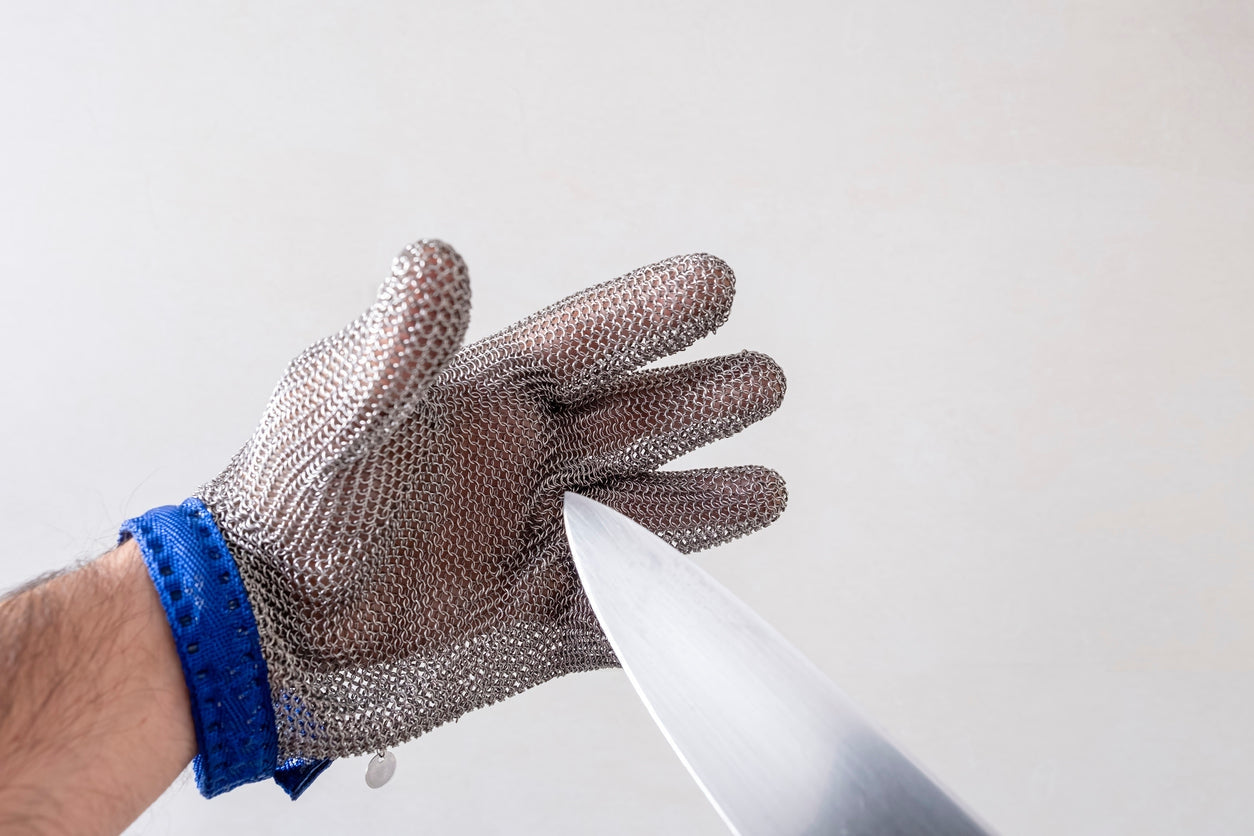Cut resistant gloves are an essential piece of personal protective equipment (PPE) for workers in industries such as construction, manufacturing, and food processing. These gloves are designed to protect workers' hands from cuts and lacerations, which can result in serious injuries and lost productivity.
They are made from materials such as Kevlar, Dyneema, and other high-performance fibers that offer varying levels of cut resistance. The gloves are classified into different levels of protection based on the amount of force required to cut through the material. The ANSI system and EN388 standard classify gloves with nine levels of cut protection, with a higher number indicating that the glove's material required a higher amount of force to cut through.
This article explores the versatile uses of cut-resistant gloves across different sectors, highlighting their importance in safeguarding hands and enhancing workplace safety.
Construction
In the construction industry, cut-resistant gloves are of utmost importance for workers who handle a range of hazardous materials and tools. From sharp edges and abrasive surfaces to nails, screws, and power tools, construction sites present numerous risks for hand injuries. Cut-resistant gloves provide a reliable defense against lacerations, punctures, and abrasions, ensuring the safety and well-being of construction workers. These gloves enable workers to confidently handle tasks involving heavy materials, sharp objects, and construction equipment, allowing them to work efficiently while minimizing the risk of hand-related accidents.
Industrial Manufacturing
In the manufacturing sector, cut-resistant gloves are essential for workers dealing with sharp tools, machinery, and materials. They provide reliable protection against cuts, abrasions, and punctures when handling glass, metal, sharp edges, or heavy-duty equipment. From assembly line workers to machine operators, these gloves enable employees to work confidently and efficiently without compromising safety.
Healthcare and First Responders
Cut-resistant gloves play a critical role in the healthcare sector, especially for medical professionals working in emergency rooms, operating theaters, and laboratories. These gloves protect against accidental needle pricks, sharp tools, and other hazards, reducing the risk of cross-contamination and injuries. Paramedics, firefighters, and police officers also benefit from cut-resistant gloves when dealing with potentially dangerous situations and sharp objects.
Gardening and Landscaping
In gardening and landscaping, cut-resistant gloves are essential for protecting hands from thorns, sharp branches, and abrasive surfaces. Gardeners and landscapers can work confidently, knowing that their hands are shielded from potential cuts, abrasions, and chemical exposure. Cut-resistant gloves designed specifically for this industry often offer additional features such as water resistance and breathability.
Woodworking
In the realm of woodworking, cut-resistant gloves are essential for protecting hands from potential hazards. Woodworkers often work with sharp tools, such as chisels, saws, and knives, which pose a significant risk of cuts and lacerations. Additionally, handling rough timber, splinters, and abrasive surfaces increases the likelihood of hand injuries. Cut-resistant gloves act as a vital safeguard, offering a reliable barrier against these risks. Woodworkers can work with confidence, knowing that their hands are protected from accidental cuts and abrasions. These gloves also enable artisans to maintain a strong grip on their tools which helps them to work more efficiently and safely.
Automotive Industry
Automotive mechanics and engineers often face hazards from sharp edges, metal fragments, and mechanical components. Cut-resistant gloves offer an essential layer of protection during tasks such as repairing engines, handling tools, or working with sharp metal parts. These gloves enhance both safety and productivity by reducing the likelihood of injuries and allowing for a secure grip.
Cut-resistant gloves have become an integral part of personal protective equipment (PPE) in various industries. By providing a reliable barrier against cuts, abrasions, and punctures, these gloves enhance workplace safety, reduce the risk of injuries, and improve overall productivity.
Applications of Cut Resistant Gloves

